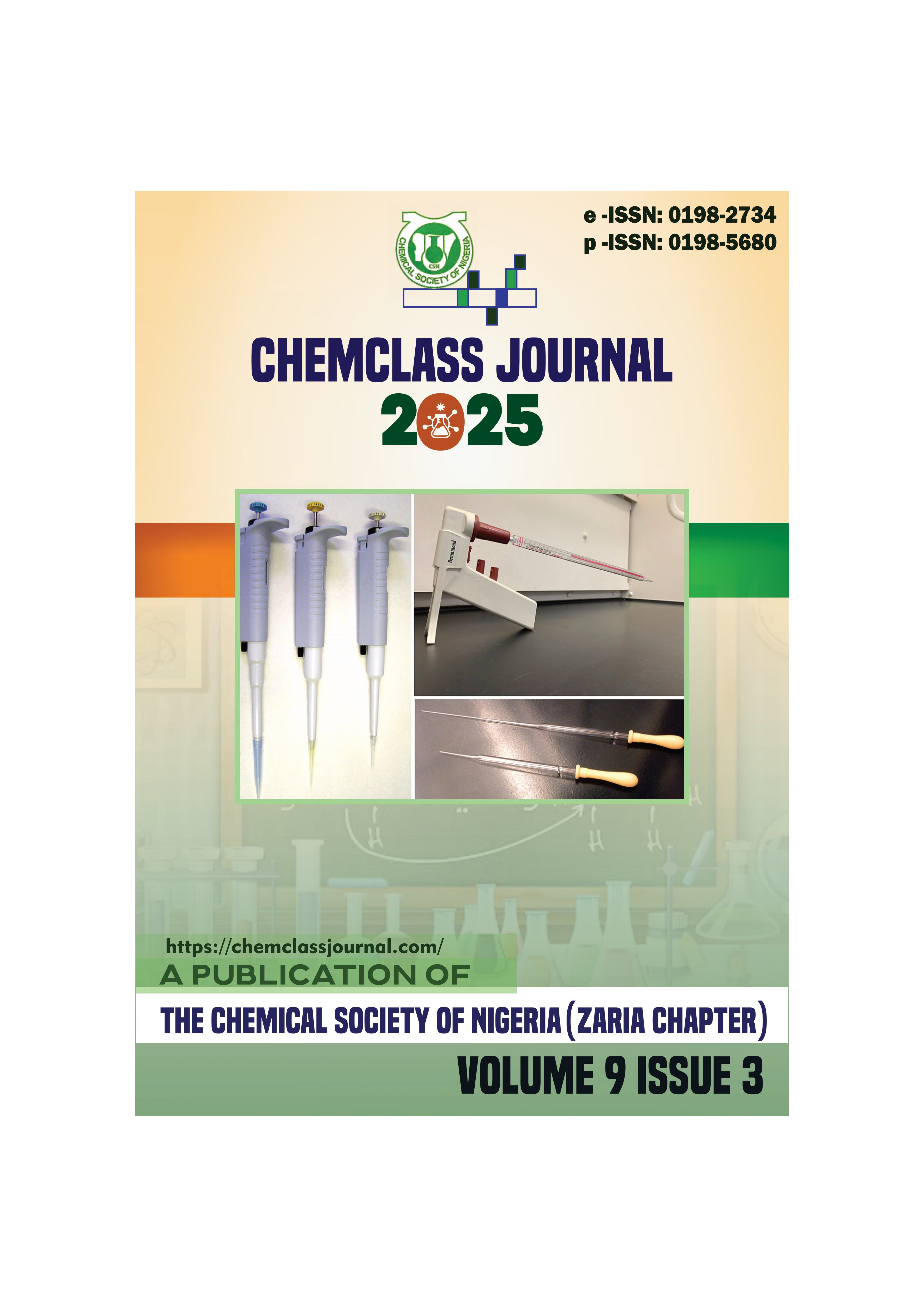Production, Characterization and Application of NILEST-Bate on Red Goat Skin for Leather Processing
DOI:
https://doi.org/10.33003/chemclass-2025-0903/09Keywords:
Enzymes , Goat Skin , NILEST-Bate , Pancreatic BateAbstract
In conventional leather processing technologies, bating process is based on the use of proteases in alkaline medium in order to break down the non-structural proteins of skin/hide, such as albumin, globulin substances that will eventually facilitate the splitting up of collagen fibres, so as to help in the penetration of tanning materials, thereby giving the finished leather the desired feel, softness, elasticity and other characteristic properties. NILEST-Bate is a natural product formed from blends of pancreatic and fungal enzymes. When compared to the commercial bate, it produced a finer grain leather with greater elasticity of goat skin. Physical testing analysis of the processed finished leather after the use of NILEST-Bate for bating showed about <37% and <12% increases in tensile and tear strengths, compared with the commercial bated leather. Results for shrinkage temperature were 80 and 82oC for NILEST-Bate and the commercial bate respectively. The results however, showed a decrease in percentage elongation (10%) in NILEST-Bate compared with the commercial product. Therefore, based on the results obtained in the present research, it can be concluded that NILEST-Bate can be used as a substitute for the available commercial bate (Oropon) used in leather manufacturing industries for bating process.





 ChemClass Journal
ChemClass Journal
